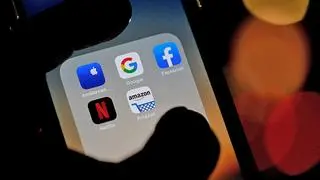What is a masked Aadhaar?
It is an offline verification system provided by the Unique Identification Authority of India (UIDAI) to keep Aadhaar data private and secure. Aadhaar holders can download it from the UIDAI portal. It will show only the name, address, photo and a virtual id, while masking the first eight digits of the Aadhaar number with special characters like “xxxx-xxxx”.
Why is it in the news?
The masked Aadhaar is in the news after the government issued an advisory on May 27 asking people to share only a masked copy of their Aadhaar instead of photocopies to prevent misuse. On May 29, it withdrew the advisory and said normal precautions were enough while sharing one’s Aadhaar copy — a move that was perhaps prompted by the worry expressed by various stakeholders, including banks, that the advisory could create panic and disrupt Aadhaar-based transactions.
How many are using a masked Aadhaar currently?
According to unofficial data, the percentage of users of masked Aadhaar is in single digits; 131.68 crore Aadhaar cards are in use as on October 2021.
Why is there a reluctance to use it?
While the masked Aadhaar option has been available for nearly five years now, not many know of it as the option pops up only when downloading the card. When downloaded at photocopy shops, netcafes or stationery outlets — a widespread practice — the option is usually ignored by the operators. There is also a worry that a masked Aadhaar may not be accepted as an identity proof.
What are the precautions to be taken while sharing an Aadhaar number?
The UIDAI cautions against sharing Aadhaar online with unauthorised or suspicious portals/agencies. Ask for a masked Aadhaar if downloading at a netcafe and other service providers. Desist from providing Aadhaar details at supermarkets, cinemas for promotional campaigns. Treat Aadhaar as carefully as your PAN and bank account details. Finally, a masked Aadhaar is a valid proof of identity.










Comments
Comments have to be in English, and in full sentences. They cannot be abusive or personal. Please abide by our community guidelines for posting your comments.
We have migrated to a new commenting platform. If you are already a registered user of TheHindu Businessline and logged in, you may continue to engage with our articles. If you do not have an account please register and login to post comments. Users can access their older comments by logging into their accounts on Vuukle.